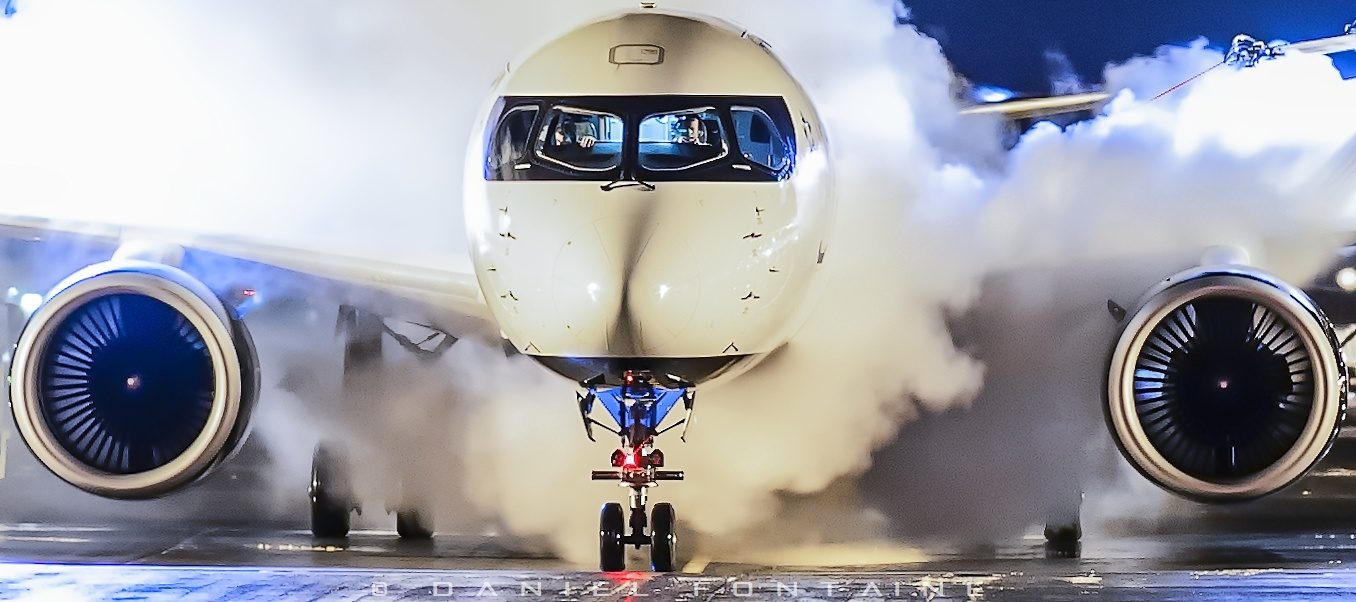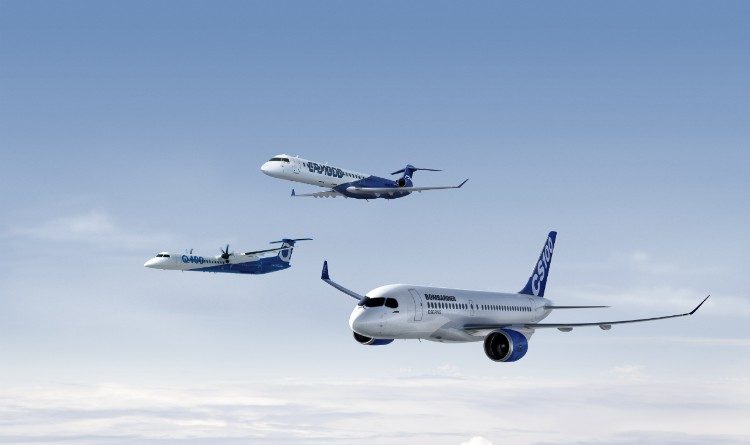Change of course at Bombardier
Change of course at Bombardier
Upon his arrival at the head of Bombardier in February 2015, Alain Bellemare declared that the company was too exposed to risk and would examine all the solutions to reduce its exposure. This statement made all its sense when, in early October, it was reported that Airbus and Bombardier were holding secret talks about an Airbus acquisition of the C Series. After they were made public, Airbus terminated the negotiations.
Then, on November 24, 2015, Mr. Bellemare and his new management team presented investors in New York with its five-year recovery plan that would allow Bombardier to return to profitability and have a stronger financial footing. After this presentation and until August 2018, the company still achieved its objectives while the quarterly results were consistently within the parameters set in November 2015. Mr. Bellemare appeared in control and even the transfer of control the C Series to Airbus in October 2017 did not change this perception since it had already tried to do it two years ago.
All the announcements of restructuring and asset sales made since the arrival of Mr. Bellemare at the helm of Bombardier were made with the objective of reducing the risk exposure of the company and improving its efficiency. The recovery plan was simple, straightforward and easy to follow. But with the announcements of November 8, everything has changed and it is obvious that the last asset sales were not part of the plan established in November 2015.
The sale of the Q400 program is surprising since last July in Farnborough, Alain Bellemare himself stated loud and clear that it was not for sale. But there are only fools who do not change their ideas according to the saying; that something has changed since last few months that forced Mr. Bellemare to make this decision.
The lack of productivity of the Q400 assembly line has been known for decades at Bombardier; in fact, this is part of the company’s folklore because everyone in Montreal has an anecdote about it, from the building maintenance worker to the top of management. If Mr. Bellemare could be satisfied with the low productivity of the Q400 until last July, he can not invoke it to justify the sale of the program four months later. Especially since the high-density 90-passenger version of the Q400 had revived the interest of airlines especially in Asia and Africa and that its sales price was hoping to make a profit.
The assembly line of the Q400 to be moved between 2021 and 2023 would have had the effect of increasing its cost of production unless Bombardier succeeds in negotiating certain adjustments with the Ontario government. Since nothing has filtered through the media about this, we can not comment on the state of relations between Bombardier and Doug Ford’s government, nor can we say whether they played a leading role in the decision to sell the Q400. But if the relationship between Bombardier and Queen’s Park had been excellent, would it have been necessary to sell the Q400?
What is certain, however, is that the employees assigned to the production and management of the Q400 will be the big losers of this transaction, because the structure of the purchaser will not keep the number of current jobs as well as wages and working conditions which will necessarily have to be revised downwards.
The sale of the Business Aircraft Pilots Training Division to CAE is surprising, as it is a profitable division with good growth potential due to the arrival of the Global 7500 followed by Global 6500 and 5500 by the end of 2019. CAE will finance the acquisition in part using its credit facilities, which it expects to repay three years from the date of acquisition. CAE management was very pleased to get their hands on this asset which is located in premises adjacent to its on Côte-Vertu. Since CAE has more than 300 positions to fill, Bombardier employees who will be transferred do not have much to worry about.
On November 8, Alain Bellemare also stated the following about the CRJ: “At this moment, we are evaluating the different strategic options”. In popular language this expression translates as: “We do not know what we will do with it, but we look at all the possibilities”. Mr. Bellemare also mentioned that the CRJ was not profitable and that it would be necessary to review the agreements with suppliers in order to make it profitable. Is it the fact of rubbing shoulders with the leaders of Airbus that prompted Mr. Bellemare to make this statement? Clearly, he wants to keep the CRJ program alive, but he can not turn to the government for help, first because the public would be very strongly against it and secondly because Embraer and Boeing (who will become owner of the competitor of the CRJ) would wait for him at the detour.
The CRJ is one of Bombardier’s aircraft programs that generates the most spin-offs in the Montreal area for each assembled aircraft. By asking suppliers to review their prices, Bombardier forces them to optimize their operations. Local suppliers will then have to adopt new management methods or purchase new, more efficient production equipment. Affected SMEs will seek government assistance to improve. For a government, it is much more cost-effective politically to help several SMEs spread across multiple ridding. As it is not Bombardier that will receive the help, its competitors will not be able to file complaints at the WTO. Bombardier’s approach may have some similarities to what Airbus has done in Europe over the last decade.
It is normal for a company to want to optimize its operations and control its production costs. What disturbs us in the November 8 announcement is the reduction of the engineering team; in 2016, while negotiating with the federal government for financial assistance, Mr. Bellemare kept saying that Bombardier needed this money so that he could continue to do research and development, because that is essential to his long-term competitiveness. While the engineering downsizing does eliminate Bombardier’s ability to develop new aircraft programs, the process will be greatly slowed down. It will take several years before a new aircraft program is announced at Bombardier. Now that there is only the CRJ in Bombardier Commercial Aircraft’s portfolio, it goes without saying that a reorganization will have to take place in order to reduce the size of its management team.
It is very easy to think that the announcements of November 8th are like a fire sale and Bombardier did nothing to change the perception on the contrary. The lower than expected cash flow alone can not explain such a shake-up. There must be one or more other reasons and it will be necessary to see the explanations that will be given on December 6th at Investor Day in New York. On this occasion, it will be necessary to be clear on the reasons which incited the change of course and especially on Bombardier’s the new heading.
>>> Follow us on Facebook and Twitter

